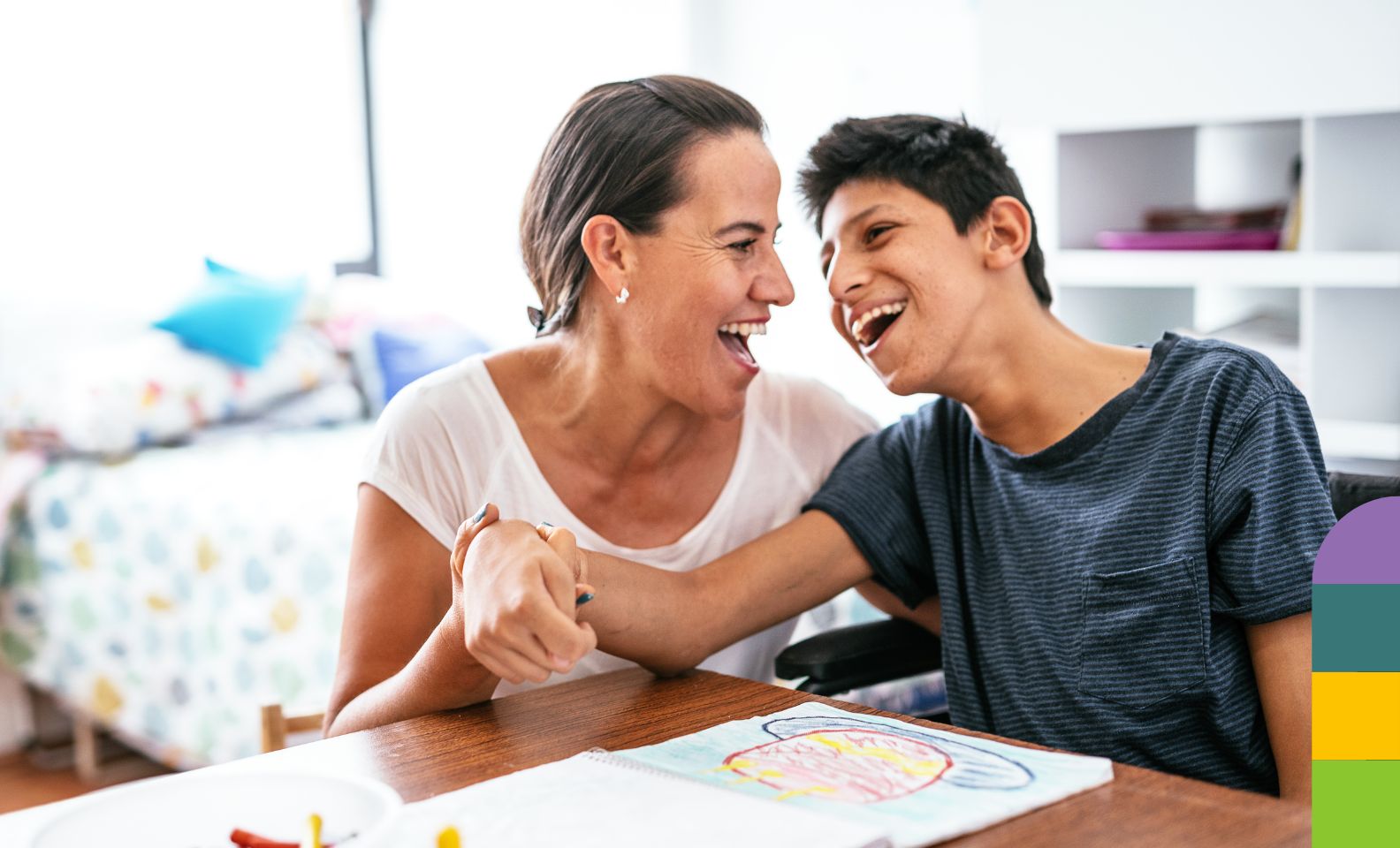Identity vs. Person Language
We encounter a wide variety of people in our journey through life and each of them adds to our experience of the world. The people we come across can teach us a new skill, a new language, about a new place, or a new idea. What others have to teach us is a product of their own lived experiences and the people they have learned from on their journey. No two people are the same, so just by being yourself, you are enriching the world and the experience of others.
When we talk about disabilities and the people who live with them, it is important to respect a person’s individual choices about how they choose to be identified. Using person-first or identity-first language allows a person with a disability to self-determine how they are referred to.
Everyone has the right to navigate their own path without being driven by the perceptions of those around them. The author Henry David Thoreau summarised this in saying:
‘If a man does not keep pace with his companions, perhaps it is because he hears a different drummer. Let him step to the music which he hears, however measured or far away.’
So what music do you hear?
What do person-first and identity-first mean?
‘Person-first’ and ‘identity-first’ refer to the way we use language in identifying a person who lives with a disability. They are distinct methods when talking to and talking about a person.
Person-first
Person-first language is a way of referring to a person with a disability where their personhood is emphasised. It means putting the person or people first in discussions about disabilities or when speaking to someone with a disability. Some examples of this include saying (or writing) ‘a child with autism,’ ‘a woman who uses a wheelchair,’ or ‘a person living with dementia.’ Notice that the person being referred to comes first and their disability or access limitation comes afterwards, hence the term ‘person-first.’
Identity-first
Identity-first language is another way of referring to a person with a disability that reflects a person being identified by their disability or access limitation. It is the opposite of person-first language in that the disability is noted first as an adjective before the person. Some examples of this include, ‘an autistic child,’ ‘a wheelchair-bound woman,’ or a ‘disabled person.’

When do I use identity-first and person-first?
Thankfully, it’s not too hard to know what language to use when referring to an individual living with a disability or access limitation. The best guide as to whether or not to use identity-first or person-first language is the preference of the individual about whom you are speaking to.
If they have made their preference known to you, go ahead and use whichever their preference is. When you are unsure, it’s best to ask them how they would like to be referred to. If you aren’t in a position to ask them, the accepted language most commonly used in Australia is person-first language where you would refer to them as a person with a disability or the like.
Is it better to use identity or person?
The idea that referring to a person with either identity-first language or person-first language is better or worse may seem subjective. After all, what’s better for some people may not be the case with others. Nonetheless, it’s the person about whom or to whom you are speaking whose opinion matters in this case.
When an individual lets you know how they want to be referred to, respect their wishes and refer to them in that manner. This will help avoid offending anyone or disrespecting their identity and autonomy. When in doubt, use person-first language unless directed otherwise.
Why does identity vs person matter?
The idea of language that prioritises either identity or person is a matter of basic respect. While not everyone will feel the same way, when a person states their preference, you’re obliged to honour their wishes and refer to them in that way.
Most people want to be identified by others how they see themselves. For a person living with a disability, they may not consider their disability to be a part of their identity and would likely prefer the person-first language. Similarly, a person living with a disability may identify themselves by their disability, so referring to them using identity-first language would be acceptable. This is the nature of personal autonomy and having control over our self and our human identity. However, a person self identifies, others should use language that concurs with that perspective.
How do I talk to someone about their disability?
We may not all know someone with a disability or have experience in talking to or about a person with a disability. While that may be the case, you may actually know a person living with a disability that is not readily apparent unless they tell you. Regardless, the way you communicate with and to any person in any circumstance should start from a place of respect.
When you first meet someone, it is customary to introduce yourself and for them to do the same. This is no different for a person with a disability. They are a person with a name, a background and lived experience, and their own feelings and perspective about themselves and the world around them.
If, and only if, a person with a disability references their disability, then it may be acceptable to talk to them about their disability. Do not presume that it is acceptable for you to talk to them about it because it is outwardly visible to you.
When you do talk to a person about their disability, the first thing you need to do is listen. Try to understand their perspective, how they feel about it, and the language they use in referring to any limitations they may experience. Be respectful of them by asking polite questions about anything you do not understand. Chances are you’ll be able to learn a lot from them about living with a disability and apply what you learn in future encounters.
If they don’t want to share any more, don’t pry or keep asking questions. Do your best to offer support and understanding of their circumstances and, above all, show them the same respect you would want to be shown if you were in their shoes.
We know it can be difficult to approach the topic of disability, so understanding the language used by and about people who live with a disability is a useful starting place. If you have questions or want guidance in talking about disabilities and the people who live with them, get in touch with us at Maple Community Services and we’d be happy to chat and provide any resources you might need.



